Text
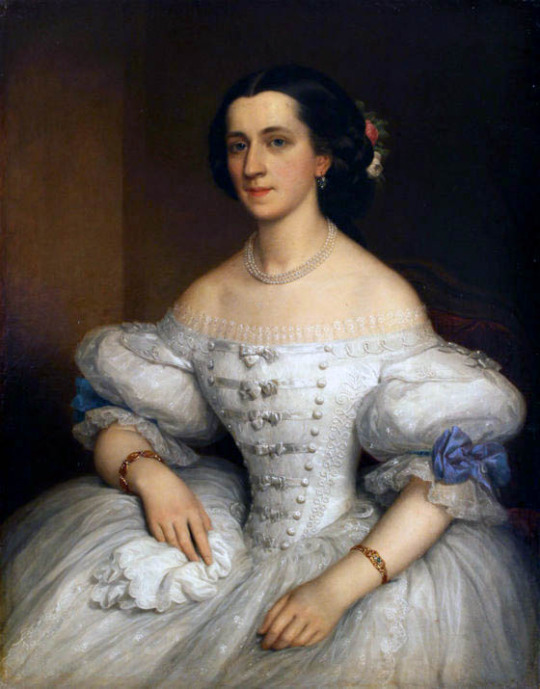
1860 Miklós Barabás - Portrait of Mrs Mocsáry Lajos
(Private collection)
221 notes
·
View notes
Text
Ball dress
American or French
about 1858


MFA Boston
Silk plain weave (taffeta), machine net (tulle) and silk bobbin lace; trimmed with silk ribbon, embroidered silk net, and silk flowers
328 notes
·
View notes
Text


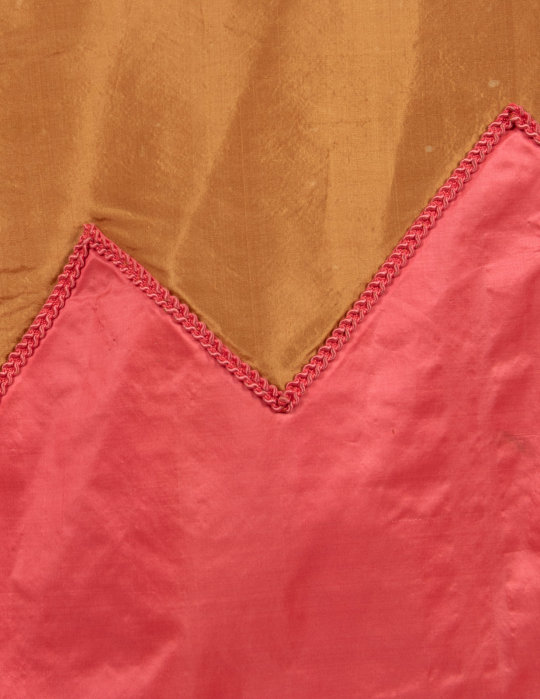





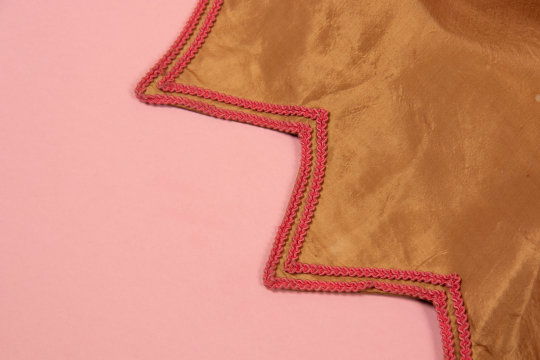
Silk Taffeta Three-Piece Evening Dress, ca. [late] 1860s
Tan silk taffeta evening dress with bright pink taffeta accents, box neckline, front pointed waist, and full circular skirt with detachable pink taffeta belt.
Unlabeled
Mary D. Doering Archive No.: DRW.133.1860ABC
Approximate Measurements:
BODICE
Shoulders: 14"
Chest: 33"
Waist: 22.5"
Length (underarm to hem): 6.5"
Sleeve (center back neck to hem): 27.5"
SKIRT
Waist: 22"
Hips: 56"
Length (side waist band to hem): 46"
Belt Length: 16.5"
Belt Width (waist): 22"
Property of Mary D. Doering, Falls Church, Virginia
Hindman Auctions
#civil war#vintage#fashion#victorian#day dress#antiques#antique clothing#1860s#victorian fashion#silk#hoopskirt#crinoline#victorian clothing
79 notes
·
View notes
Text

[Cameo] Brooch, ca. 1860
MEDIUM: Shell, gold
PERIOD: Circa 1860
DIMENSIONS: 2.5 × 2 × 0.38 in. (6.4 × 5.1 × 1 cm)
CLASSIFICATIONS: Accessories, Women's
CREDIT LINE:ler, 1936
OBJECT NUMBER: 940
COLLECTIONS: Women's Costume
Monmouth County Historical Society, New Jersey
A large oval cameo brooch, depicting a kneeling child in prayer, with a tree at left. The cameo is held in a plain gold setting with a pin and open loop closure back.
Cameos have been popular since ancient Egypt and have been made of a variety of materials. During the nineteenth century, shell cameos were particularly popular for both women's and men's jewelry. The large oval cameo in the Association's collection is carved from shell, using the different colors within the shell itself for depth and contrast. A brooch of this type would have been worn at the neck of a woman's gown, offset by a decorative lace or embroidered collar.
This brooch was donated to the Historical Association by Elizabeth Casler West (1870 - 1949). A lifelong Middletown resident, Casler West was the daughter of William T. and Isabella Van de Vort Casler. At the time of the donation, Casler stated that the cameo pin had belonged to Elizabeth Conover of Monmouth County.
1 note
·
View note
Text

Benjamin Vautier (1829–1898)
Portrait of the artist's wife, 1864
Deutsch: Bildnis der Frau des Künstlers Benjamin Vautier, Öl auf Leinwand, 51 x 41 cm, Standort: Museum Oskar Reinhart, Winterthur, SIK-ISEA Inventarnummer 27693
Date 1864
Source Lexikon zur Kunst in der Schweiz
Image via Wikimedia
#portrait#painting#art#1860s#1860s fashion#civil war#victorian#vintage#German#evening dress#lace#fichu#1864
10 notes
·
View notes
Text



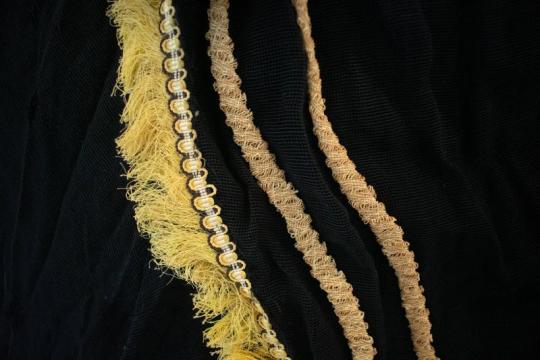

Day dress owned by Julia Norton Hartshorne, ca. 1868.
PLACE MADE: San Francisco or New York, U.S.A.
MEDIUM: Cotton gauze, silk, glazed cotton
PERIOD: 1868
DIMENSIONS: 57 × 23 in. (144.8 × 58.4 cm)
CLASSIFICATIONS: Costume, Women's
CREDIT LINE: Gift of Mary Minturn Adams in memory of her Hartshorne Ancestors, 2018
OBJECT NUMBER: 2018.10.32
COLLECTIONS: Women's Costume
A woman's one-piece gown of open weave black cotton gauze, with a front hook and eye closure and "dog leg" waistband closure at left front waist. The gown has a high collar, slightly dropped shoulder seams, long shaped sleeves, and a skirt with gored front panels and gathered back waistband flowing into a long trained hem. The skirt is lined with plain black silk, with an additional 12" high glazed brown cotton hem facing. The gown is trimmed with striking cornsilk yellow cotton fringe along with rows of three-dimensional cylindrical woven bands, appearing to be of stiffened cornsilk yellow cotton threads. The gown also includes a separate and removable waistband sash with an attached front rosette of black gauze and cornsilk fringe and a draped rear overskirt. The gown's bodice is lined with glazed off-white and glazed brown cotton with additional boning channels enclosing whalebone stiffening.
The wardrobe of Julia Norton Hartshorne, carefully preserved and protected in the years following her untimely death at the age of thirty, provides a rare glimpse into virtually an entire wardrobe of one woman at one moment in time. It is not uncommon for special garments of one particular person to be saved over time from various special occasions. Julia's wardrobe, however, presents a slice of a moment in time in her fashion choices. This particular gown is one of the more quirky in Julia's wardrobe, almost "concept fashion" in design. The unknown dressmaker relied on bold texture contrasts, with the matte black cotton gauze, so loosely woven as to give a rough appearance. The cornsilk yellow trimming is a profound contrast and appears to be of matte cotton fibers. The second type of trimming is a woven matte fiber, possibly cotton, appearing to be woven in the round, resulting in a cylindrical "ribbon." Many dressmakers regularly traveled to France and England to purchase fabrics, ribbons, and trimmings for their customers.
Monmouth County Historical Society, New Jersey
#victorian#fashion#vintage#day dress#1860s#new jersey#antique clothing#victorian fashion#1868#cotton#antiques
10 notes
·
View notes
Text

A mourning brooch featuring locks of hair belonging to Cornelia Ray Hamilton, a granddaughter-in-law of Alexander Hamilton. After Cornelia's death in December of 1867, her widow was gifted this brooch from his mother.
The underside is engraved "Cornelia Ray Hamilton. /BORN DEC. 26TH..1829. DIED DEC 1ST.. 1867." A paper label adhered to the underside of the original leather case bears the handwritten inscription "Gold & pearl breastpin/ with C. Hamilton's hair - / given to me by Mother/ January 1868."
260 notes
·
View notes
Text
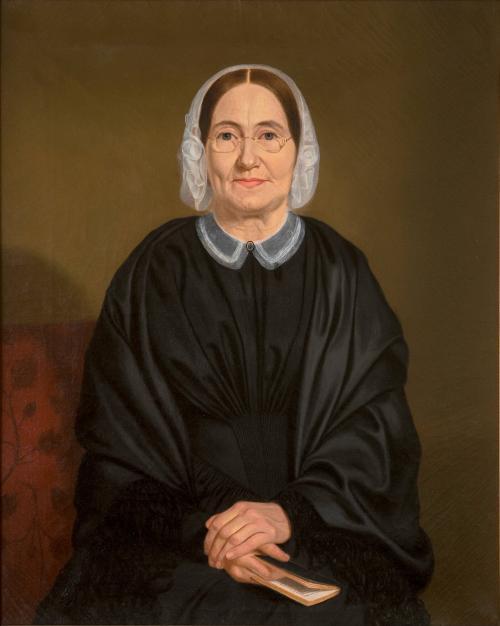
Margaret Stoutenborough Hubbard, ca. 1850-55
ARTIST: Harvey Jenkins
MEDIUM: Oil on canvas
PERIOD: ca. 1850 - 1855
DIMENSIONS: 35.5 × 28.6 in. (90.2 × 72.6 cm)
CLASSIFICATIONS: Portraits
CREDIT LINE: Gift of Franklin J. Gronde, in memory of his wife, Katherine Holmes Gronde, 1965
OBJECT NUMBER: 1983.554
COLLECTIONS: Portraits
Monmouth County Historical Society, New Jersey
Description
Three-quarter length portrait of an elderly woman with brown hair facing forward, wearing a black dress with white lace collar and a brooch, a black shawl, and a white lace day cap. She is sitting in a floral red-upholstered chair, and is holding a book in her clasped hands.
Curatorial Remarks
Harvey Jenkins first appeared in Monmouth County in 1849. He remained in the Middletown area until his death in 1908. A Civil War veteran, Jenkins was very active in the Red Bank post of the Grand Army of the Republic. Most of his portraits were painted before his military service. He supported himself later in life by teaching music. Jenkins portrays his subjects in a very honest manner, with special skill in depicting fabrics and lace. The Association’s collection includes a signed Jenkins portrait of Margaret Hubbard's husband Samuel (1983.555), as well as pastel portraits of Margaret Hubbard’s parents, and her daughter Rebecca, all three by Micah Williams.
Notes
Margaret Stoutenborough was born in Holmdel in 1794, the daughter of John Stoutenborough and Catherine Holmes. She married in 1818 to Samuel Hubbard, lived near Red Bank, and died in 1874.
#1850s#1850s fashion#art#victorian#victorian era#victorian art#victorian painting#painting#new jersey
4 notes
·
View notes
Text
2 notes
·
View notes
Text
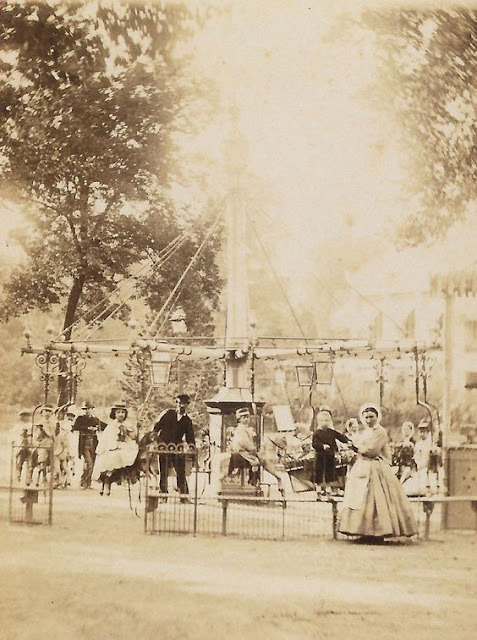
Outdoor carousel, poss. around Champs-Élysées, Paris. ca. 1860s. via eBay.
#paris france#paris#victorian#carousel#second empire#france#french#champs élysées#1860s#1860s fashion#amusement rides#amusement park
10 notes
·
View notes
Text
There are many, many shows I'm not allowed to watch. Historical shows...and paranormal shows.
Watching period dramas these days like:
Her hair should be up.
THAT IS NOT A FRENCH HOOD
This is pre-19th century. Why the HELL are they wearing trousers?
Corsets DO NOT work like that.
What ... is ... that?
Back-lacing
WHERE IS HIS FREAKING CRAVAT (alternatively: Why is it tied like that? Why?)
Would it physically kill you to button that up properly?
Seriously, what is this aversion to showing off men’s legs? Cowards.
Also, codpieces? Only ugly villains get codpieces. Our sexy heroes do not get burdened with codpieces because we have to show that they are Sexy and Heroic.
Apparently we’re just going to forget about the existence of hats. And bonnets. I see how it is.
The hairstylists vaguely glanced at actual period hairstyles and went “nah, we have Creative Vision.”
I don’t care that Big Clothes Volume isn’t sexy in the 21st century. It WAS sexy in the 16th century. Give me Big Clothes Volume!!
That looks like something from either a Barbie movie or modern Haute Couture, but whatever it is, it ain’t historical.
Chemise? We don’t know her.
Skirt hiking
It is the medieval period and there are no headdresses or veils in sight. Suspicious.
Powdered wigs? On OUR aristocratic 18th century characters? Hahahahahahahahaha, no. —Hollywood
53 notes
·
View notes
Text

Beilage zur Allgemeinen Musterzeitung, August 1864. Metropolitan Museum of Art.
#civil war#fashion#victorian#fashion illustration#fashion plate#day dress#victorian fashion#1860s fashion#1860s#1864#crinoline#hoopskirt#fashion magazine
14 notes
·
View notes
Text
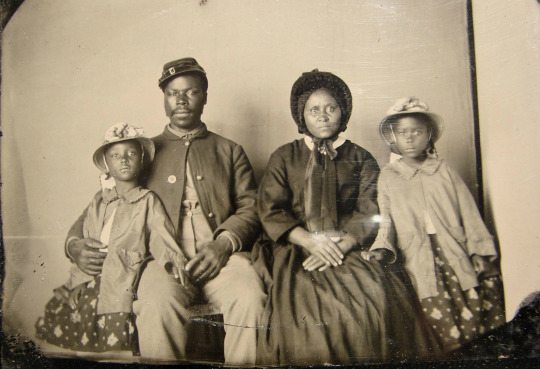
Unidentified African American soldier in Union uniform with wife and two daughters, between 1863-1865
92 notes
·
View notes
Photo

La Mode illustrée, no. 36, 8 septembre 1862
Ville de Paris / Bibliothèque Forney
47 notes
·
View notes
Text

ab. 1860 Sally Paul at Lynn (photo by unknown photographer)
(Norfolk Museums Collections)
222 notes
·
View notes
Text
18 notes
·
View notes
